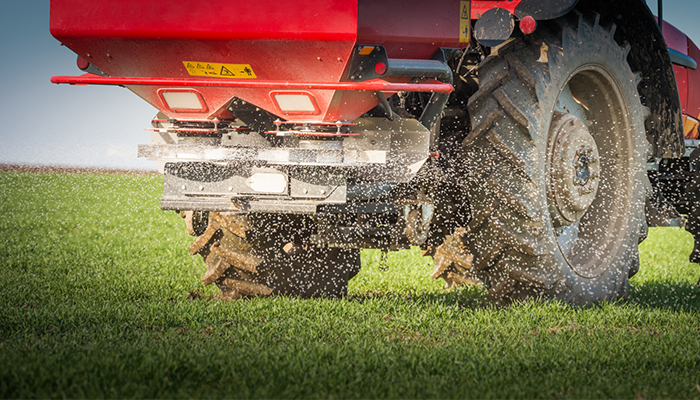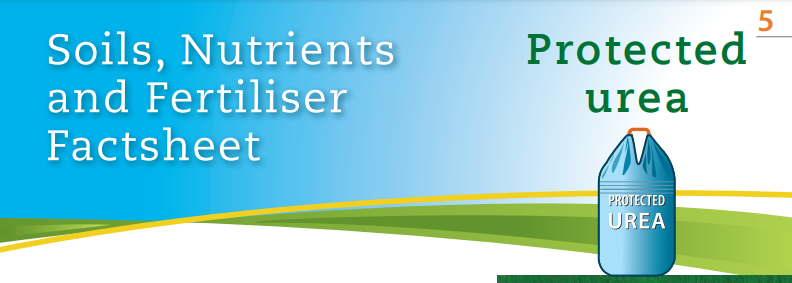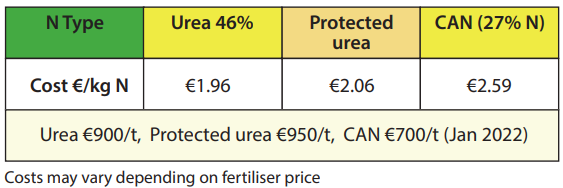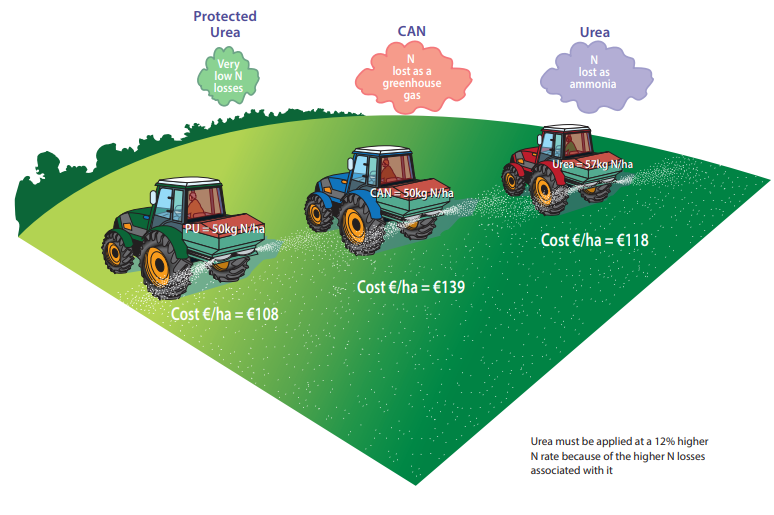22 February 2022
Protected Urea Factsheet

Teagasc recently published a compendium of 20 factsheets providing the latest technical advice on soils, nutrients and fertiliser. The fifth of these is about Protected Urea and can be read here. All 20 will be published here on Teagasc Daily
Farmers are urged to focus on Nutrient management planning, optimisation of soil fertility, using organic manures strategically and increasing clover in swards, all balanced with prudent fertiliser usage.

Why protected urea?
Using protected urea in grassland results in lower nitrous oxide (N2O) emissions than CAN and lower ammonia losses than urea. This makes it the most sustainable fertiliser N source for meeting both greenhouse gas and ammonia loss emission commitments
Is protected urea cost effective?
Protected urea is up to 20% cheaper per kg N than CAN
How do grass yields compare?
In a number of grassland experiments (Teagasc Johnstown Castle, Moorepark, Athenry, Ballyhaise and Clonakilty) there was no difference in grass yield when protected urea was compared to CAN
Where can I get a list of protected urea products?
Log onto: https://www.teagasc.ie/crops/soil–soil-fertility/
Tips for achieving best results with protected urea
- Develop a fertiliser plan for the farm to determine your protected urea and compound fertiliser needs for the year ahead
- Contact your fertiliser supplier early and order the protected urea fertiliser you need
- Calibrate your fertiliser spreader to ensure the correct application rate and spreading width for protected urea
- Protected urea can be applied throughout the growing season, but as with all fertilisers avoid applications when soils are too cold or wet, or under drought conditions
Protected urea delivers lower emissions at a lower cost

Deirdre Hennessy, Seamus Kearney, Mark Plunkett, David Wall, Mark Moore (Editor), Pat Murphy, Stan Lalor, were the main contributors to this series of leaflets. Numerous colleagues from Teagasc AGRIP, CELUP, REDP, Signpost, PR dept. and advisory service also participated.
To access the entire compendium of 20 factsheets see Soils, Nutrients and Fertiliser Factsheets Find more information on this topic in Soil & Soil Fertility
